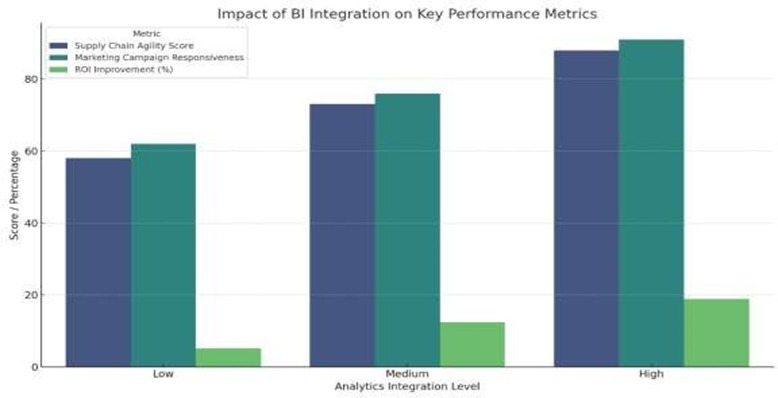INTEGRATED ANALYTICS: THE ROLE OF BUSINESS INTELLIGENCE IN DATA-DRIVEN SUPPLY CHAIN AND MARKETING
Keywords:
Business Intelligence, Supply Chain Agility, Marketing Analytics, Data-Driven Strategy, Integrated Analytics, ROI OptimizationAbstract
In today’s hypercompetitive global landscape, the role of integrated analytics through Business Intelligence (BI) is pivotal in enabling data-driven decision-making across enterprise functions, particularly in supply chain management (SCM) and marketing performance. This study investigates the transformative impact of BI systems on enhancing supply chain agility, marketing campaign responsiveness, and return on investment (ROI). Drawing upon simulation-based analysis, the study categorizes organizations by their level of analytics integration—low, medium, and high—and evaluates corresponding performance outcomes. Quantitative metrics were synthesized to simulate how businesses leveraging advanced analytics outperform their less data- driven counterparts in critical operational areas. The findings reveal a clear positive correlation between the depth of BI integration and key performance indicators. High analytics maturity is associated with an 88% supply chain agility score, a 91% marketing responsiveness score, and an 18.9% ROI improvement—substantially outperforming the low-integration counterparts. The results affirm that the adoption of analytics-driven platforms not only fosters operational efficiency and adaptability but also enables proactive market responsiveness and strategic alignment. Furthermore, this paper explores how BI tools facilitate real-time monitoring, predictive modeling, and agile adaptation—contributing significantly to the digital transformation of supply chains and customer engagement models.

Downloads
Published
Issue
Section
License

This work is licensed under a Creative Commons Attribution-NonCommercial-NoDerivatives 4.0 International License.
All articles published in the Multidisciplinary Research in Computing Information Systems are licensed under an open-access model. Authors retain full copyright and grant the journal the right of first publication. The content can be freely accessed, distributed, and reused for non-commercial purposes, provided proper citation is given to the original work.




